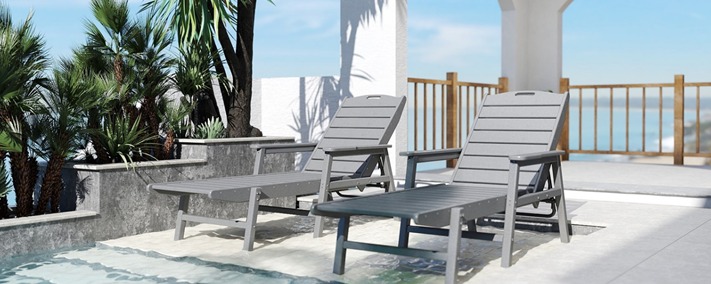When it comes to choosing materials for outdoor furniture, one name that consistently rises to the top is. But what exactly is HDPE, and more importantly, is HDPE suitable for outdoor furniture? If you’re investing in your patio, garden, or deck, understanding the qualities of this material can help ensure your furniture remains stylish and functional for years. Let’s explore the reasons why HDPE is making waves in the world of outdoor design and why it might be the perfect choice for your following outdoor setup.
What is HDPE?
HDPE stands for High-Density Polyethylene. It’s a type of thermoplastic polymer made from petroleum, known for its durability, strength, and resistance to weathering. Used in everything from milk jugs to marine applications, is hdpe good for outdoor furniture has found a premium niche in outdoor furniture manufacturing. When recycled, HDPE can be transformed into a dense, wood-like material that doesn’t splinter, crack, or rot—ideal for furniture exposed to the elements.
Durability in All Conditions
One of the biggest concerns with outdoor furniture is its ability to withstand the changing seasons. So, again, in terms of durability? Absolutely. HDPE furniture is built to last. It resists moisture, UV rays, snow, salt spray, and extreme temperatures. Unlike wood, it doesn’t absorb water, which means it won’t swell, warp, or decay over time. It also doesn’t crack or become brittle under intense sunlight exposure, making it an ideal solution for climates with strong sunlight or fluctuating weather conditions.
Low Maintenance, High Reward
Let’s face it—no one wants to spend their weekends sanding, sealing, or repainting patio chairs. HDPE furniture offers a significant advantage in this regard. It’s incredibly low-maintenance. A simple wipe-down with soap and water is usually all it takes to keep your furniture looking brand new. This ease of care makes HDPE furniture a favorite among busy homeowners and hospitality businesses alike. With no need for special oils, stains, or protective treatments, HDPE saves both time and money in the long run.
Eco-Friendly Credentials
HDPE is suitable for outdoor furniture not just because of its performance but also because of its sustainability. Much of the HDPE used in furniture production is recycled—often from post-consumer waste like milk containers and shampoo bottles. Not only does this reduce the amount of plastic waste in landfills, but the furniture itself is also recyclable at the end of its long life. This circular use of resources helps reduce the carbon footprint of your home decor choices.
Style Meets Substance
Gone are the days when plastic furniture looked cheap and flimsy. HDPE enables stunning designs in a wide range of colors and finishes, including those that mimic wood grain and natural textures. Whether your outdoor style leans toward rustic charm, modern minimalism, or vibrant coastal flair, HDPE furniture can match your aesthetic. It retains color well due to UV-resistant pigments mixed into the material during production. That means your chairs and tables won’t fade or peel after a summer in the sun.
Comfort Considerations
Many HDPE furniture pieces are ergonomically designed for maximum comfort and support. From contoured Adirondack chairs to cushioned sofas with sleek frames, manufacturers often combine this versatile material with high-end design touches. HDPE is also splinter-free and smooth to the touch, making it comfortable for bare skin even after prolonged outdoor use. For added coziness, many HDPE furniture collections offer the option to include weather-resistant cushions, enhancing both the look and the lounging experience.
Resistance to Pests and Mold
Another major bonus of using HDPE outdoors is its resistance to mold, mildew, and insects. Unlike natural wood or wicker, which can harbor mold spores and attract bugs, HDPE provides no organic material for pests to thrive on. This keeps your outdoor setup cleaner and more hygienic.
Price Point: An Investment Worth Making
HDPE furniture, indeed, tends to be more expensive upfront compared to entry-level plastic or wood options. However, its long lifespan, minimal maintenance, and all-weather resilience often make it more cost-effective over time. When inquiring, it’s crucial to consider not just the initial cost but also the total value and longevity. Many is hdpe good for outdoor furniture use HDPE as a premium material for outdoor furniture, recognizing its unmatched durability and customer satisfaction.
Final Verdict
The answer is a resounding yes. It combines durability, sustainability, aesthetic appeal, and low maintenance into a single material. Whether you’re furnishing a backyard patio, a poolside lounge, or a balcony in the city, HDPE offers a solution that withstands the elements while maintaining its appearance year after year.










